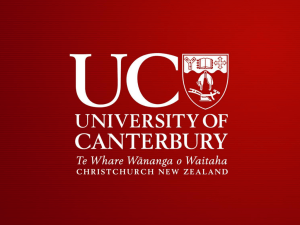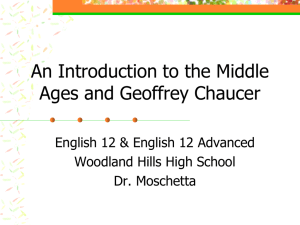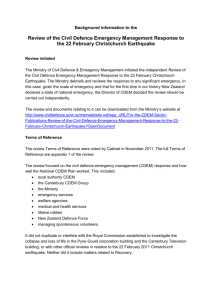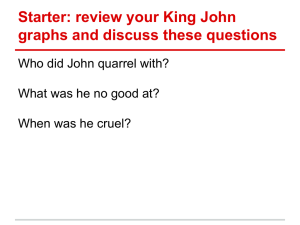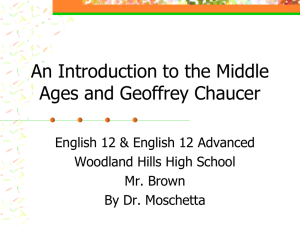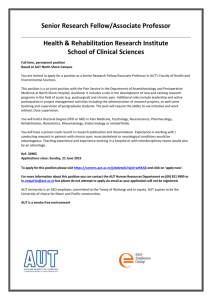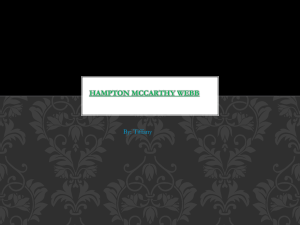improving our understanding & potential for community engagement
advertisement
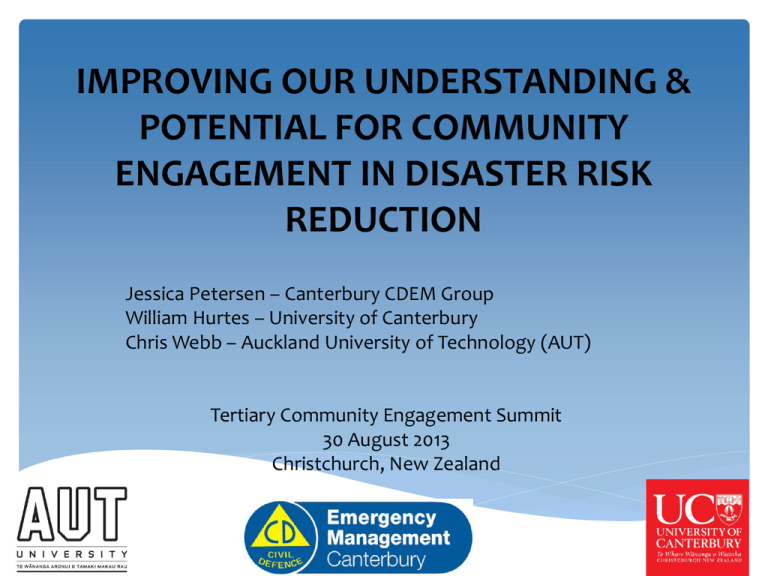
IMPROVING OUR UNDERSTANDING & POTENTIAL FOR COMMUNITY ENGAGEMENT IN DISASTER RISK REDUCTION Jessica Petersen – Canterbury CDEM Group William Hurtes – University of Canterbury Chris Webb – Auckland University of Technology (AUT) Tertiary Community Engagement Summit 30 August 2013 Christchurch, New Zealand Key Components Disaster risk reduction Community engagement Disaster Risk Reduction What is it? Identifying and analysing long term risks from hazards Taking steps to eliminate and/or reducing their likelihood and consequences Why is it important? National CDEM Strategy Promotes sustainable management of hazards Encourages acceptable levels of risk Current Situation Largely driven by local authorities Community Engagement How long is a piece of string? Questions & debates abound What is a community? Engaging the community? Informing; consulting; An engaged community Empowerment Participatory community involvement So why engage the community in disaster risk reduction? Disasters: impact on people affect and disrupt communities disrupt the systems that serve, organise and sustain communities notion of resilience implies individual, group & community action prior to, during and following a disaster Key points emerging Potentially Community Engagement provides: Better understanding of the risks Opportunity for more control over the risks Complementary approach to “top down” planning Joined up thinking rather than stitched up thinking (Shaw, 2005) More effective use of local resources Potential for integrating the views of multiple stakeholders Greater level of trust between communities and local authorities However it is challenging to: Identify & represent the social diversity of communities Clearly define a community – confusion & lack of focussed action Balance the focus on majority rule & that of minority groups Communities are not internally homogeneous, nor harmonious Develop the competencies & social resources Align & balance community perceptions & interpretations Personalise and disseminate hazard information It is not a PANACEA but.... It does offer a range of opportunities for progressive risk reduction measures Can allow the coming together of lay and technical expertise Has the potential to bring risk reduction measures closer to the local level Has the potential to make policy makers and planners more accountable Level of engagement will depend on context & aims of those initiating the risk assessments Community engagement approaches: Is to understand and give voice to local perceptions of risk reality through local people’s own analysis of challenges and capacities. Engagement 1. What is your group’s understanding of community? 2. What types of communities should to be involved in the DRR process? 3. What do we perceive engagement to be in this context? 4. What strategies could you recommend to meet the DRR & community engagement objectives? Jessica Petersen Canterbury CDEM Group 03 379 9481 jessica.petersen@cdemcanterbury.govt.nz William Hurtes University of Canterbury 027 344 4068 william@hurtes.info Chris Webb Auckland University of Technology (AUT) 9 921 9999 ext 7677 chris.webb@aut.ac.nz




